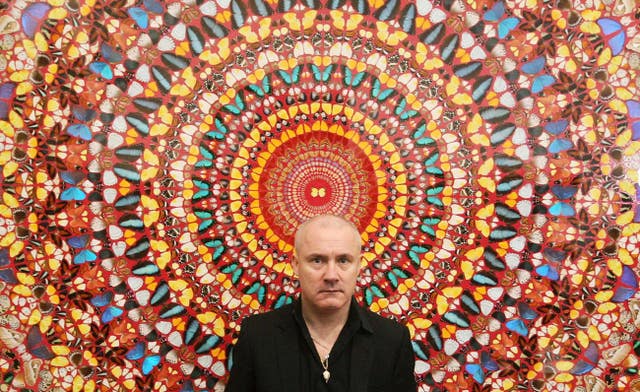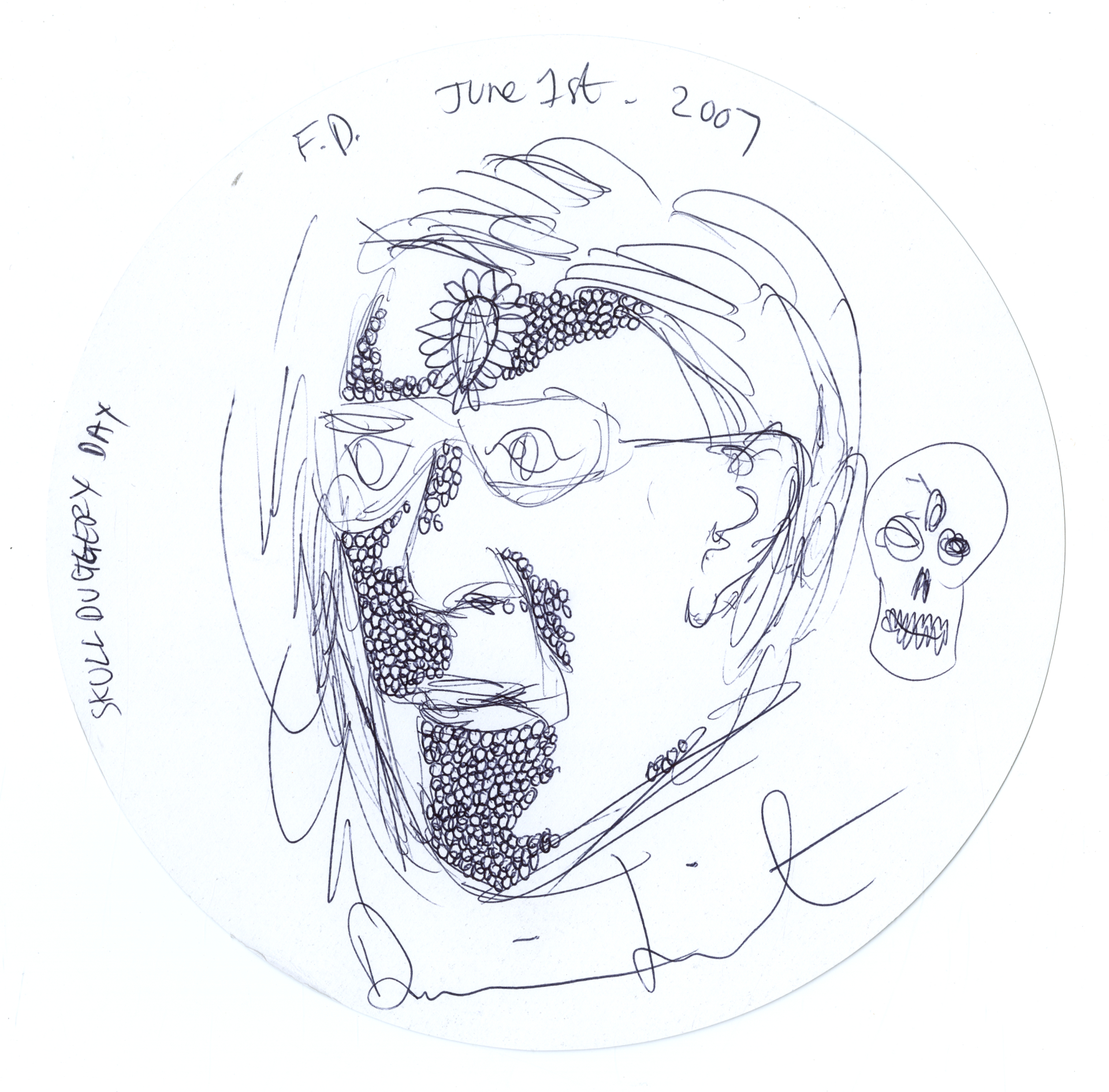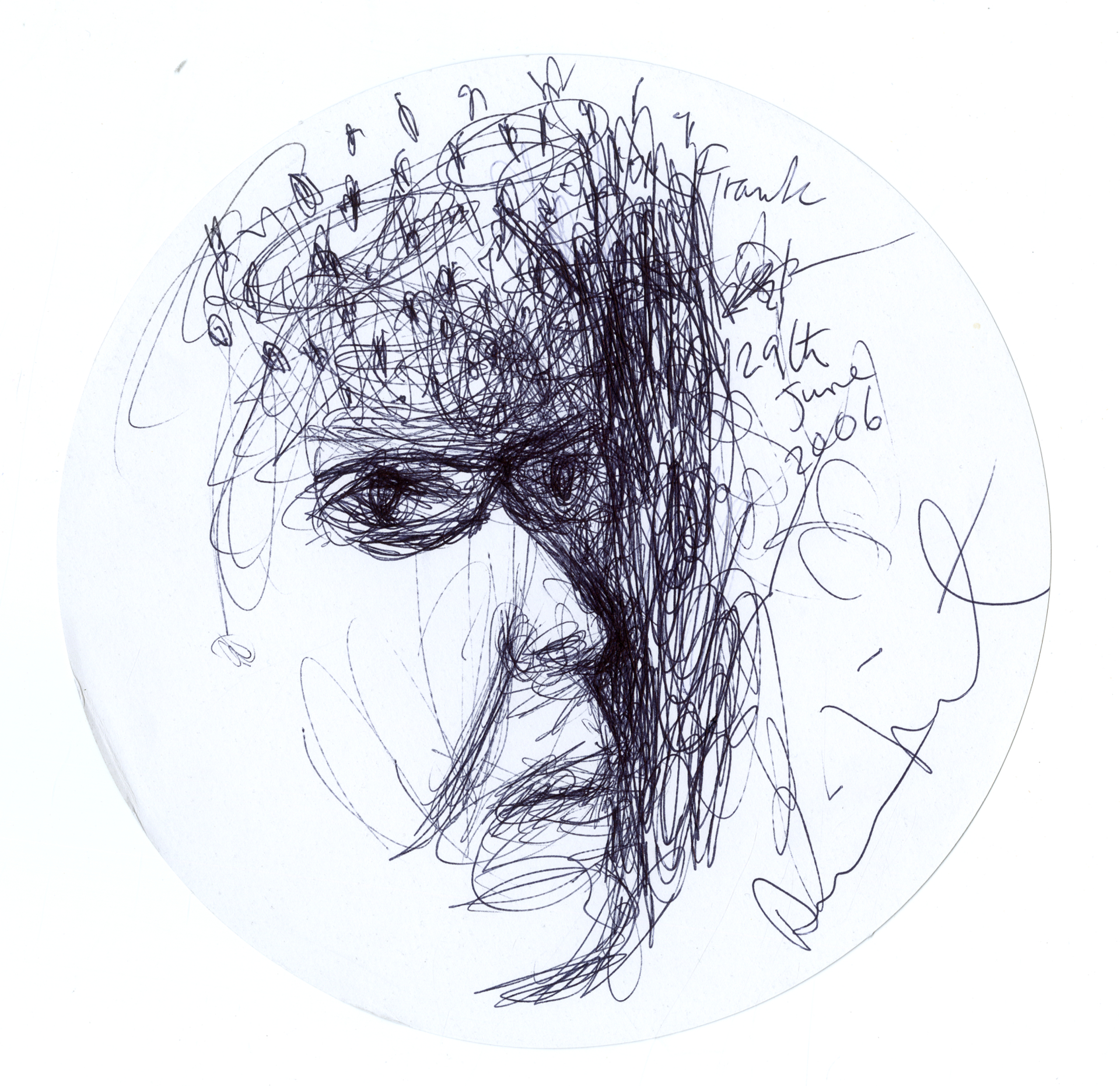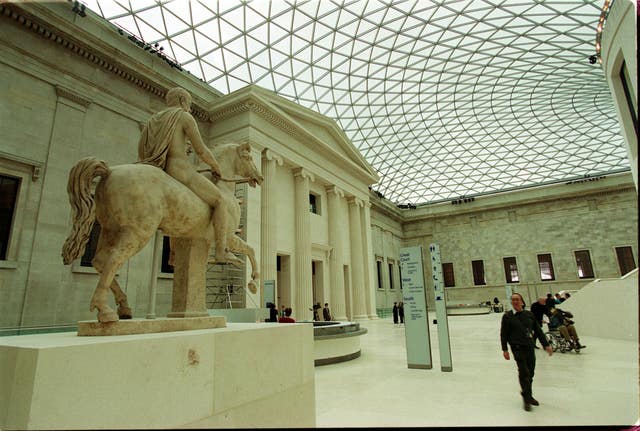Damien Hirst portraits with coffee stains given to British Museum
The artist sketched on the mats while eating breakfast at The Wolseley.

More than 70 portraits by Damien Hirst – drawn on food-marked placemats at the breakfast table – have been given to the British Museum.
The drawings, some still smeared with food and coffee stains, will be displayed at the museum, famous for treasures such as the Elgin Marbles and the Rosetta Stone.
Hirst created the images of his then business manager, the man who turned the controversial artist “into a global superstar”, while the pair tucked into breakfasts at The Wolseley.

The 73 portraits, drawn during their hour-long meetings over six years until 2010, are a glimpse into a business relationship which helped transform the contemporary art world.
Hirst, whose controversial creations include a pickled shark and diamond-encrusted skull, would hand over his finished drawings to Frank Dunphy at the end of their upmarket meals in London’s Mayfair.
Dunphy has now donated the works under the Cultural Gifts Scheme set up to encourage philanthropy in the arts, in which donors receive a tax reduction in exchange for their gifts.
The British Museum’s curator of prints and drawings Hugo Chapman told the Press Association: “Damien Hirst raised money-making and commercialisation of his art to a new level and his relationship with Frank Dunphy was very much part of that.

“Most artists don’t have business managers.
“But their relationship turned a very successful artist into a global superstar.”
Dunphy was Hirst’s business manager and agent during the 1990s and 2000s.
The drawings allude to the money-spinning and recession-defying auctions of Hirst’s works, masterminded by Dunphy, his diamond and platinum skull – when he wrote on a placemat “Skullduggery Day” – and depict Dunphy as a boiled egg.
Some still contain marks of breakfast residue, from a smear of butter to a coffee stain.

Hirst placed the 22cm placemats on his knee, out of sight of other diners, and drew with biro or pencil.
“They’re very immediate, they’re drawn with great energy,” Chapman said.
“They’re done at speed, there’s a doodling quality about them but at the same time they have a wonderful immediacy.
“Damien can draw, there’s no doubt about that,” he said of the artist, also known for his spin paintings and butterfly collages.
And he added: “Although they’re done on the back of a placemat, they’re signed and dated.
“Damien realised that everything he was producing has a value, nothing is thrown away.”
The British Museum will display a selection and the placemats will be stored alongside works by Michelangelo, Leonardo Da Vinci and Henry Moore in its Study Room.
Chapman added that drawing in restaurants is “a sort of meme of 20th-century artists – even while you’re waiting for your porridge you’re creating”.

In 300 years, people will be as interested in Hirst and Dunphy’s relationship as they are in Picasso and (his art dealer) Ambroise Vollard, he said.
British Museum director Hartwig Fischer said the drawings “provide a compelling insight into one of the most fascinating and impactful art world partnerships.
“The British Museum already has extensive holdings documenting the centuries-old interaction between artists and the art market, and Hirst’s The Wolseley Drawings add a fascinating new chapter to that story.”
Arts minister Michael Ellis said: “Damien Hirst is one of the most successful living artists with his work admired around the world.
“I am delighted that, thanks to the Government’s Cultural Gifts Scheme, these works will become part of the British Museum’s collections and enjoyed by the public.”
The donation of the collection generated a £90,000 tax reduction.





